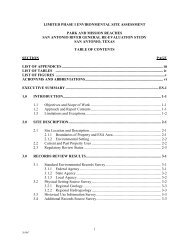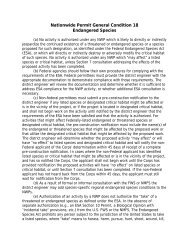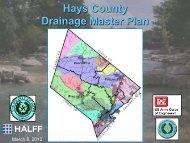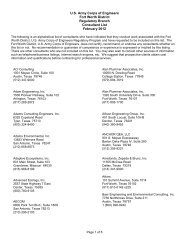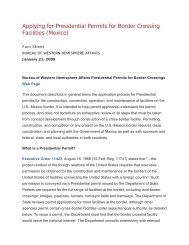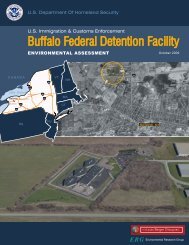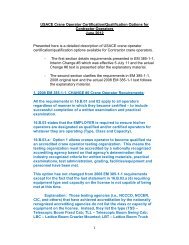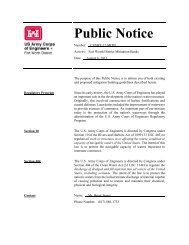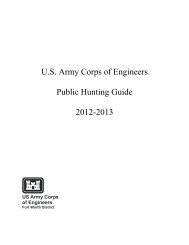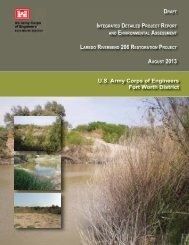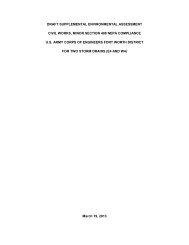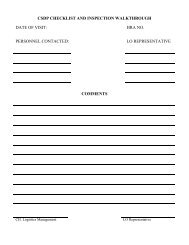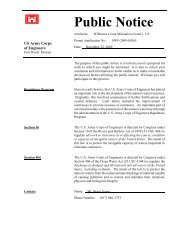environmental assessment us border patrol, tucson sector
environmental assessment us border patrol, tucson sector
environmental assessment us border patrol, tucson sector
Create successful ePaper yourself
Turn your PDF publications into a flip-book with our unique Google optimized e-Paper software.
3-231234567891011121314151617181920212223242526272829303132333435Yaqui chub and includes all aquatic habitats on the San Bernardino NWR (USFWS 2011b).Many protected fish, wildlife, invertebrate, and plant species occur on the refuge and aresupported by associated upland, wetland, and riparian habitats (Table 3-2).Table 3-2. Known Federally and State-Listed Species that Occur on and ImmediatelyAdjacent to the San Bernardino NWRSpecies Stat<strong>us</strong>* OccurrenceHuachuca Water Umbel E residentSan Bernardino Springsnail Proposed E/WC1 residentYaqui Chub E/WC1 residentBeautiful Shiner E/WC1 residentYaqui Catfish T/WC1 residentYaqui Topminnow E/WC1 residentChiricahua Leopard Frog T residentMexican Gartersnake WC1 residentYellow-billed Cuckoo WC1 nestingLesser Long-nosed Bat E migrantSource: USFWS 2011b; *Stat<strong>us</strong>: WC1 = Arizona Wildlife Species of Special Concern; E =endangered; T = threatened3.7.1.4 State-Listed SpeciesThe Arizona Natural Heritage Program (ANHP) maintains a list of species with special stat<strong>us</strong> inArizona. The ANHP list includes flora and fauna whose occurrence in Arizona is or may be injeopardy or that have known or perceived threats or population declines (AZGFD 2010). TheANHP list is provided in Appendix B. These species are not necessarily the same as thoseprotected under the ESA.The project area could be considered suitable habitat for vario<strong>us</strong> state sensitive bird, reptile,mammal, and plant species; however, no state-listed species for Cochise County were observedduring the May 2011 biological survey of the alternative sites.3.7.2 Environmental Consequences3.7.2.1 No Action AlternativeThe No Action Alternative would preclude the construction, operation, and maintenance of theproposed FOB. No wildlife habitat or potential habitat for protected or threatened or endangeredspecies would be altered. Indirect impacts from illegal activity would continue. More agentswould be required to <strong>patrol</strong> the remote eastern zones of the USBP Douglas Station’s AOR toaccount for the necessary drive time to their <strong>patrol</strong> areas. Indirect impacts from CBV activitiesand subsequent USBP interdiction activities would be greater under the No Action Alternativethan any of the other alternatives.3.7.2.2 Preferred AlternativeNo Federally or state-protected species were observed during the biological survey at thePreferred Alternative site. No lesser long-nosed bats, potential or existing roost sites wereobserved, and only sparsely distributed, low-quality potential forage habitat was observed at thePreferred Alternative site during the 2011 biological survey. Based on site surveys, CBP hasDouglas FOB EADraftAug<strong>us</strong>t 2011



